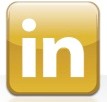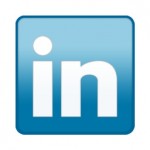NOTE: this post originally ran, in a slightly less libelous version, on Adaptu.
Intermediate readers, skip the next paragraph.
IPO = initial public offering. Refers to a formerly privately owned company finally making its shares available to whomever wants to buy them. The company now trades on a stock exchange and its financial statements are now public record. The biggest American IPO in history (not counting companies that went into receivership, became wards of the taxpayers and reemerged) was that of VISA in 2008. The heretofore private company opened on the New York Stock Exchange at $64.35/share. It peaked at $96.59 last April, and sits around 75 now.
On second thought, skip this paragraph too.
Somewhat evidently, every company has to do its IPO at some point. An IPO is obviously a big deal: and for many companies’ principals, who own options to buy the stock at a certain discounted price and will profit the second the company goes public, an IPO is as good as it’s ever going to get.
A few weeks ago, boutique cupcake retailer Crumbs Bake Shop went public. “Boutique”, by the way, is a French word meaning “small, but with cachet among urbanites and various other pretentious fools.”
Crumbs has 24 retail stores in the New York tri-state area, 6 in Los Angeles, 3 in D.C. and its environs, and 1 in Chicago with 3 more New York-area stores in the works. In New York and Los Angeles, they deliver to your door. The company is a public relations phenomenon, renowned as the creator of the Baba Booey cupcake (peanut butter frosting, chocolate cream cheese frosting, peanut butter chips) and the Artie Lange cupcake (chocolate cream cheese frosting, Vicodin filling, served in an edible wrapper doused in lysergic acid diethylamide).
Still, a company that can get Howard Stern’s attention is not necessarily a company worth investing in. If you’re old enough to remember Outpost.com, you know what we mean. Unlike VISA, Crumbs isn’t an internationally recognized name with decades of results behind it. Nor is it Microsoft (IPO 1986), nor Google (2004), with a palpable potential for growth and a revolutionary and established product line. Use whatever corporate buzzword you want with cupcakes, but “game-changer” doesn’t really fit.
Okay, what about its company history?
It barely has one. Crumbs was founded in 2003 by a husband and wife team – she’s a lawyer, he’s…well, here’s the relevant sentence from his official bio:
Jason started Famous Fixins, a manufacturer of celebrity licensed products, with such products as Britney Spears bubble-gum and NSYNC lip balm as well as products with high profile names such as Derek Jeter, Mike Piazza and Sammy Sosa.
We could go for a cool, refreshing, sturdy, gluten-free, Mac-compatible fair trade Sammy Sosa product right now. How about you?
Does it have goodwill – the accounting term that refers to intangible value beyond its assets?
Nothing you can quantify. To we middle Americans, Crumbs doesn’t even register. We’d even heard repeatedly about their novelty cupcakes, but couldn’t tell you the company’s name. The one New York cupcakery we did know the name of is Magnolia Bakery, and only because of that one Saturday Night Live bit.
Does the company have a competitive advantage that no one can replicate?
That depends. Do you have a kitchen and a couple of mixing bowls?
Crumbs’ IPO hit the ground with a valuation that now leaves it around $58 million. Granted, ExxonMobil has more than that in its petty cash envelope, but $58 million is a decent amount for a company that until this point has had only 2 visible owners.
The markup on a cupcake is enormous. Crumbs retails its cupcakes for $4.50. That’s each, not for a 4-pack. With that much profit baked into every bite, the company has designs on opening 300 more stores.
Making cupcakes can be profitable, maybe even in the long term. But a $58 million business? Here are a couple of schools of investing thought, each encapsulated in a single sentence:
You have to look at a company’s income, shareholders’ equity, how much debt it’s carrying and how much cash flows through it before you invest in it.
Control Your Cash
We go to Starbucks every day, so I buy Starbucks stock.
Barbra Streisand
It’s safe to say that Crumbs is counting on people who subscribe to the latter belief to help it grow into maturity.
But even Starbucks sells more than mere coffee. At one point the company went so far as to publicly consider itself the primary place to exist when you’re neither at work nor at home. The Wi-Fi and the music attest to that, and it appears to be working. Besides, when Starbucks went public it was far more entrenched than Crumbs is today.
It’s not that you can’t sell a capricious, semi-serious item in a recession – Altria and Molson Coors are both doing fine, and it’s slightly less harmful for society that overextended people stuff their faces with Baba Booey cupcakes rather than cigarettes or alcohol. But it’s hard. Let the lawyer and the manufacturer of celebrity licensed products build the business themselves.
We give the Crumbs founders our wishes for success. What we’re not giving them is our money.
McKesson has a $21 billion market cap and is trading at close to a 12-year peak. They sell payroll software to doctors, and prepare health claim management forms. You’ve never heard of them, which means they’re really underground. If that’s not hip and trendy, we don’t know what is.
**This article is featured in the Carnival of Personal Finance #314**







